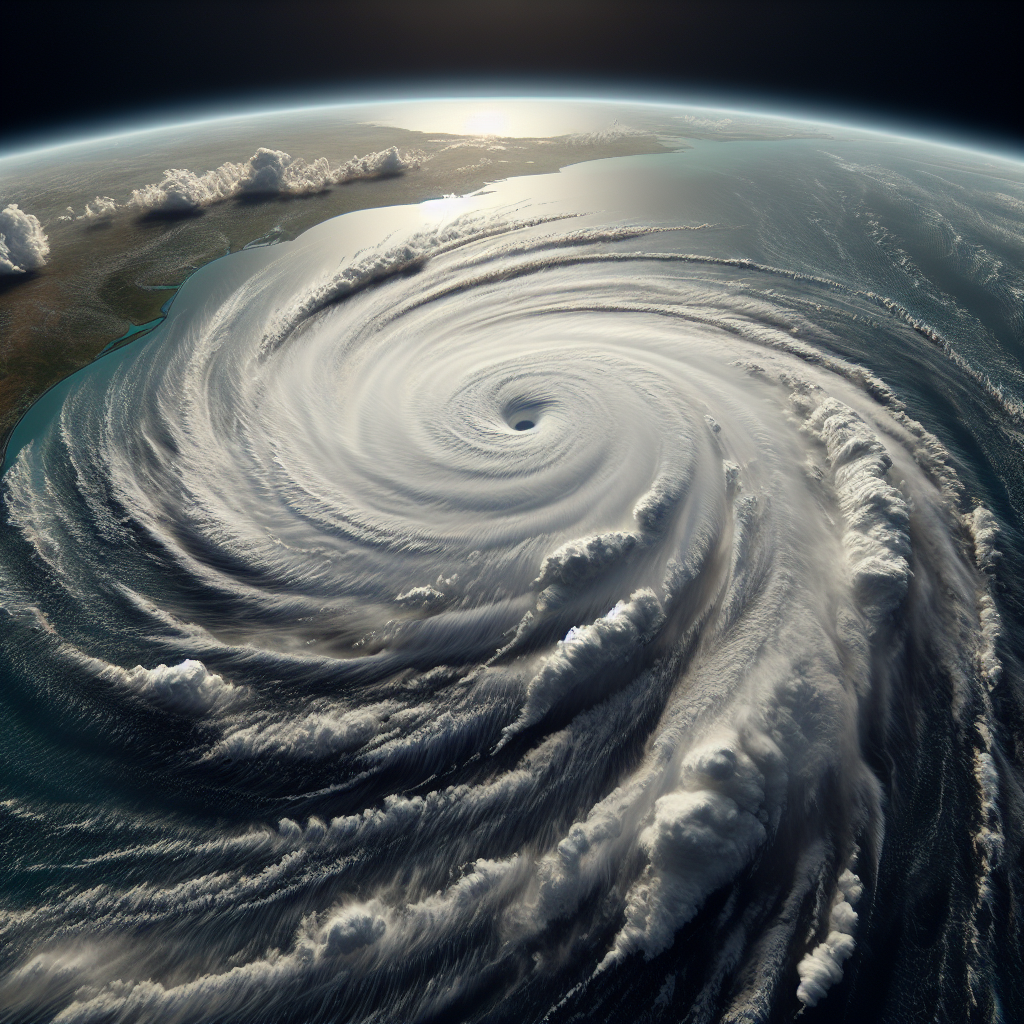Hurricane Beryl's Historic Impact: Climate Change's Role in Deadly Storms
Hurricane Beryl, the season's first hurricane, made landfall near Matagorda, Texas, bringing dangerous storm surges and heavy rain. It was the earliest Category 5 hurricane in Atlantic history. Record-breaking sea temperatures, driven by climate change, are contributing to more severe storms, highlighting the need for better climate adaptation measures in vulnerable regions.

Hurricane Beryl made landfall near the coastal town of Matagorda in Texas on Monday, bringing dangerous storm surges along the coast and packing strong winds and heavy rain as it moved inland, the U.S. National Hurricane Center (NHC) said. The storm hit land as a Category 1 hurricane, strengthening from a tropical storm over the Gulf of Mexico. The season's first hurricane, it made history last week as the earliest Atlantic storm on record to hit the strongest possible hurricane ranking: Category 5.
After devastating communities and leaving nearly a dozen dead across the Caribbean, the storm came ashore on the Yucatan Peninsula in Mexico and weakened before strengthening again over the Gulf of Mexico and hitting Texas. Record-breaking sea temperatures that allow tropical storms to get stronger faster, driven by human-caused climate change and cyclical weather patterns, are fueling what scientists say is shaping up to be a very dangerous hurricane season.
Beryl made landfall near the coastal town of Matagorda in Texas early on Monday and is expected to weaken rapidly as it moves over eastern parts of the state through the course of the day, the NHC said. Currently located about 55 miles (89 km) north of Houston, Beryl was moving at 14 mph (22 kph) and was expected to move into the Lower Mississippi Valley into the Ohio Valley on Tuesday and Wednesday, the briefing said.
Hurricanes typically weaken as they move over land.
Beryl is the strongest storm to hit the southeastern Caribbean since Ivan smashed into Grenada as a Category 3 in 2004, damaging most of its buildings, wreaking havoc over Jamaica as a Category 4 and strengthening to Category 5 over western Cuba. Ivan weakened before hitting the United States but spawned over a hundred tornadoes. It killed around 90 people and left more than $20 billion in damages. Beryl swept through Jamaica, Grenada, St. Vincent and the Grenadines last week, killing at least 11 people. Authorities reported heavy and costly damage that destroyed homes and cut off water and power lines, leaving many people displaced.
In Jamaica, Prime Minister Andrew Holness warned that while Caribbean nations often deal with dangerous storms, the frequency of very severe weather events is increasing due to climate change and island economies will need to adapt.
Hurricane seasons are annual periods during which tropical storms are most likely to form, fueled by strong ocean winds, warm seas and humidity. In the Atlantic Ocean this typically lasts from June through November, peaking in the late summer. The Atlantic is also home to the so-called Hurricane Alley, or Main Development Region, a stretch of warmer water spanning from West Africa to much of the Caribbean, Central America, Mexico and the southern United States.
On average, a hurricane season produces 14 named storms (winds of at least 39 mph or 63 kph), of which seven become hurricanes (winds over 74 mph or 119 kph) and three become "major," with wind speeds over 111 mph (178 kph). But as ocean temperatures break new records, the U.S. National Oceanic and Atmospheric Administration(NOAA) warned of an "extraordinary" 2024 Atlantic season this year and forecast 17 to 25 named tropical storms, with eight to 13 hurricanes and between four and seven major hurricanes.
Hurricane Beryl, the season's first hurricane, was the earliest Category 5 on record in the Atlantic, according to the United Nations' World Meteorological Organization. Anne-Claire Fontan, a scientific officer for the agency, said a reason Beryl had developed so early in the season was because the "hurricane alley" is hitting its warmest ever temperatures. Scientists say a streak of record temperatures in the North Atlantic since early last year would be extremely unlikely without climate change, driven by man-made fossil fuel emissions.
Higher water temperatures allow storms to intensify quicker, and ocean temperatures of at least 26.5 degrees Celsius (79.7 degrees Fahrenheit) are needed to maintain a tropical cyclone. According to NOAA, north Caribbean coastal water temperatures are hovering around 29.4 C (85 F).
A Category 5 is the strongest hurricane on the Saffir-Simpson Scale, bringing winds of 157 mph (252 kph) or higher, capable of causing catastrophic damage including the destruction of homes and infrastructure. Since 1960, only 30 Atlantic hurricanes have reached Category 5, with 2005 - the year deadly Hurricane Katrina devastated New Orleans - setting the record for the most recorded in a single season, at four.
As the Caribbean prepares to bear the brunt of a highly destructive hurricane season, regional leaders have pushed for better financing options so governments can invest more in protecting their populations from worsening climate change. Highly indebted and tourism-dependent Caribbean states have long called on wealthy nations and top global polluters to do more to honor their pledges to meet emissions goals, provide climate adaption funds and consider debt relief. However, a Reuters investigation found that billions in funds sent to help developing nations battle climate change have been funneled back to rich nations.
(With inputs from agencies.)










